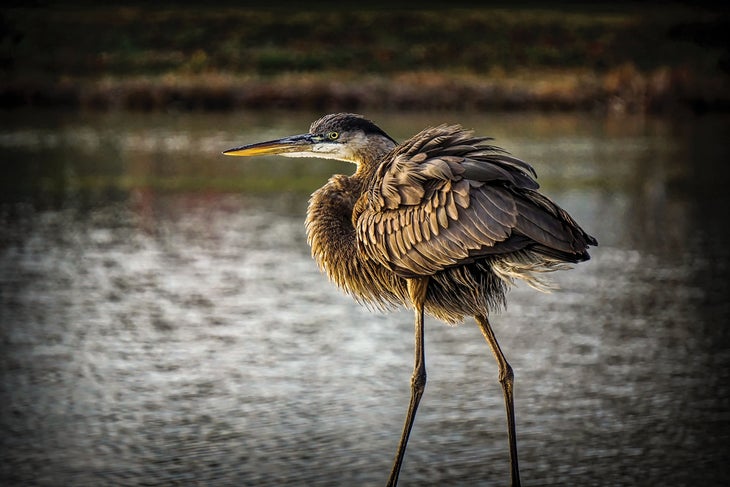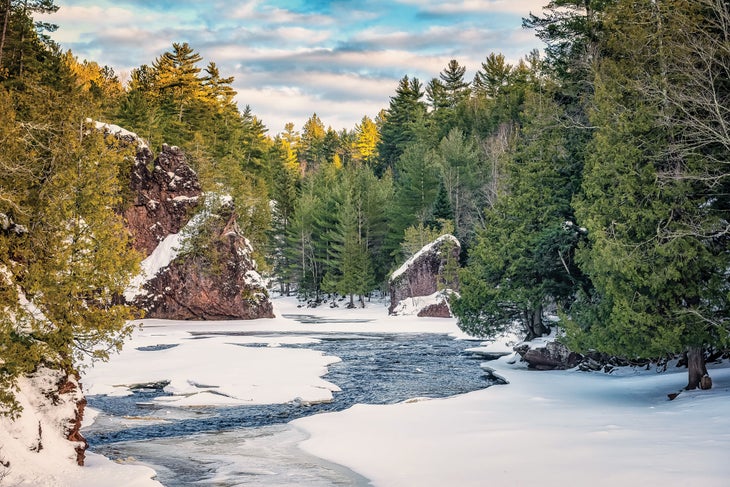Products You May Like
Get full access to Outside Learn, our online education hub featuring in-depth fitness, nutrition, and adventure courses and more than 2,000 instructional videos when you sign up for Outside+
Sign up for Outside+ today.
It may be winter, but not everyone is hibernating. A layer of snow on the ground (or, at least, a seasonal change in temperatures) changes animals’ behaviors, letting hikers see fauna in spots and situations that they might otherwise not have. These 10 hikes are our top picks for seeing wildlife in the fourth season. —The Editors
Trailhead 40.1559, -83.1887
The 5-mile Savannah Trail through deciduous forest is the perfect winter spot to catch Cooper’s hawks, and great blue herons. Plus, it’s doubly fun to birdwatch on cross-country skis when the snow comes in.
Trailhead 34.3513, -106.8823
After climbing to the mesa top for views of the Ladrone Mountains, this 3.8-mile trail wanders the edge of the escarpment before dropping back into the valley. Black-throated sparrows are the most frequent winter visitors, but there are plenty of other animals here, including coyotes and pronghorn; mountain and desert ecosystems meet at the refuge.

Trailhead 36.6725, -759153
Take the East Dike Trail to the Barbour Hill Trail to look for swans, geese, and ducks as you stroll from freshwater marsh to maritime forest and then over coastal sand dunes. The swans are tundra swans from the Arctic that migrate south every winter.
Trailhead 42.6396, -72.9946
A 7-mile point-to-point through Massachusetts’ largest old-growth forest, this trail is built along a historic trading route. It’s frequented by bobcats, the only wildcat remaining in the state. Look for their wide, snowshoe-like pawprints alongside the wooded path.

Trailhead 46.3652, -90.6465
Take the 2.5-mile double-loop Takesson Trail to see beaver dams amid a lush hardwood forest, with tamarack bogs and cedar dotted between. Bonus: You can mountain bike this trail between snowstorms, too.
Trailhead 43.7121, -103.3515
The 10.3-mile French Creek Trail heads through grassy valley bottoms where bison like to feed in the winter, when snow covers the hills. Granite outcroppings along the namesake creek provide nesting areas for raptors, too, and you can often spot pronghorn on the surrounding slopes.
Trailhead 45.9651, -121.3441
This refuge is home to Washington’s only breeding population of sandhill cranes, along with elk and porcupines. Look out for all three on the 2-mile Willard Springs Loop, which alternates between forest and meadow with views of Mt. Adams in the distance.
Trailhead 39.4308, -105.1188
A 9-mile (point-to-point) section of the Colorado Trail, this path is as popular with bighorn sheep and mule deer as it is with hikers. The route winds through the rocky hillsides that rise from the South Platte River, where eagles often soar over the intermittent cliffs.
Trailhead 37.1482, -122.3445
This 3-mile hike is an impressive wildlife double-feature. From the bluff, you can watch the vast Pacific horizon for gray whales migrating south. Then hit the beach to check out the elephant seal colony, where over 10,000 of these enormous pinnipeds congregate every winter.
Trailhead 40.5720, -111.7744
At only 5.4 miles out-and-back and with just over 1,000 feet of elevation gain, this path makes for a low-key, but rewarding, day on the trail. It runs beside a creek, where you can spot rosy-finches and bald eagles in the winter months, with glimpses up into the snowy Wasatch.
